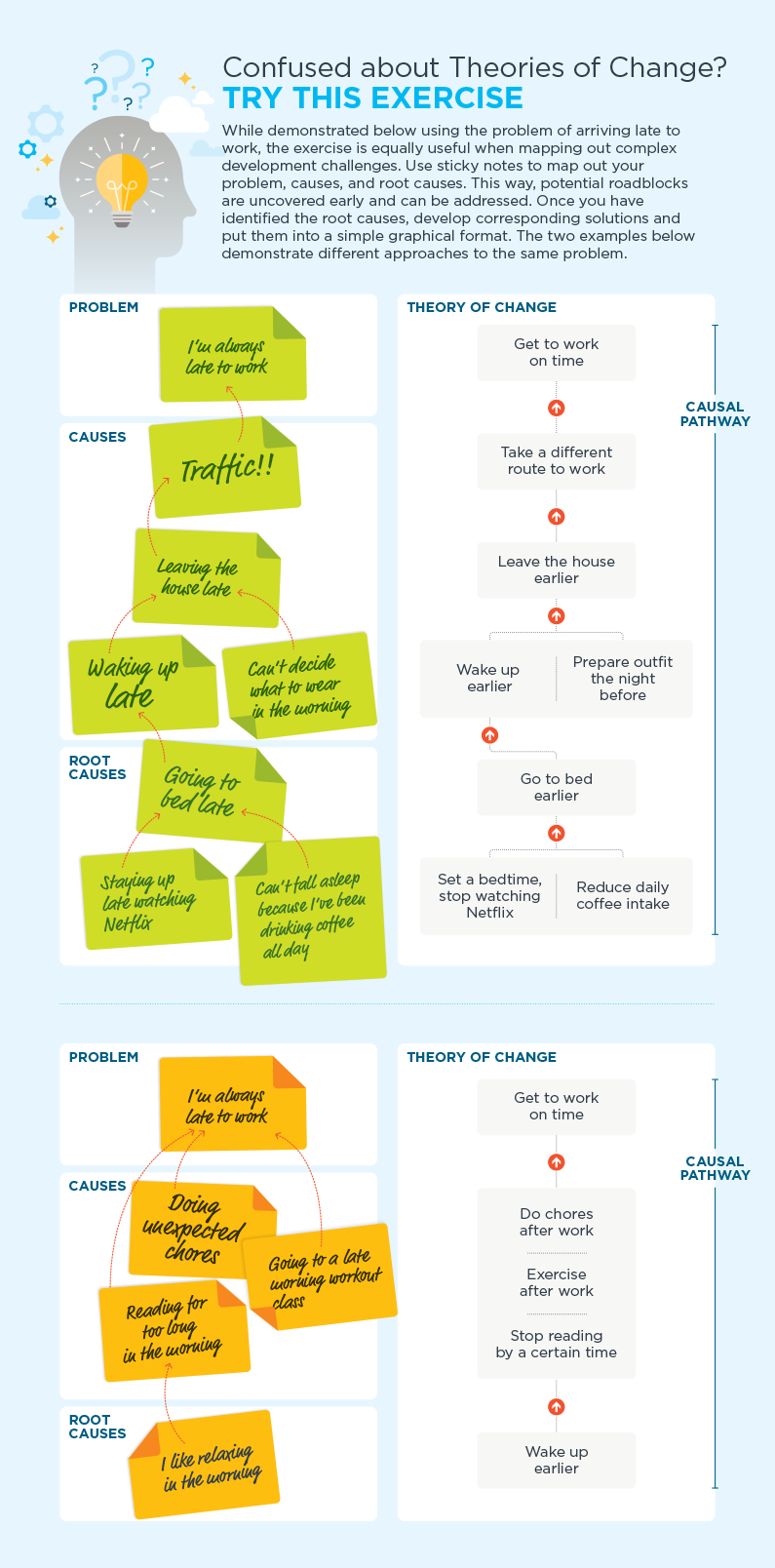
Confused about Theories of Change? Try This Exercise .
Toolkit | March 13, 2018

Theories of change are more important than you might realize. When you run through your causal logic, you can get to the root of the problem and identify corresponding solutions for each problem. This exercise to help you map out your problem, causes, and root causes.
Theories of change (ToC) are actually simpler than you think. The ToC is just a road map. It’s the articulation of how and why a given set of interventions will lead to specific change. Here is a simple activity to create a theory of change. Take out a few sticky notes and have your team jot down the major problem and the contributing problems as separate statements, each on their own sticky note. Order them following the “if/then” logic. Write down corresponding solutions on separate sticky notes and order them in the same fashion. If each team member does the exercise separately, you can come together and check your logic. Does each members’ order correspond with yours? Or does the order of your solution statements not match your problem statements? If the answer to these questions is no, it can be a red flag to reexamine your logic. Learn more through this blog post.
